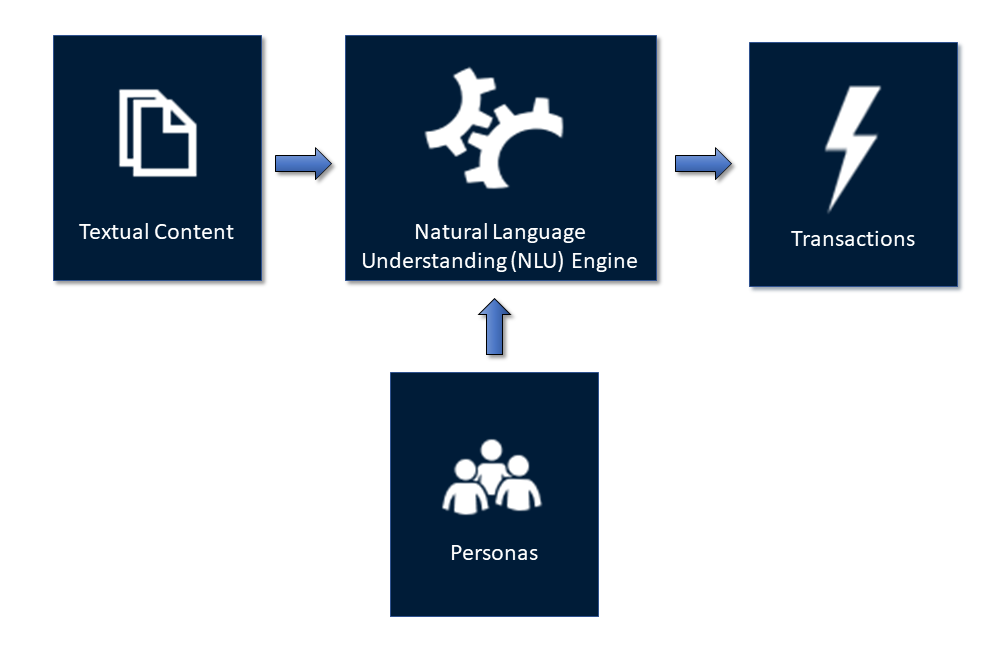TUF
Golden Goose AI's Textual Understanding Framework (TUF) is an Intelligent Automation (IA) Natural Language Understanding (NLU) framework that uses Personas.
A Persona is a collection of custom no-code textual content identification criteria based on patterns and Natural Language Processing (NLP). Personas support conditional hierarchical identification criteria. Transactions are invoked on content found or not found.
Transactions are various sorts of activities, such as sending emails, creating a report, calling a 3rd party microservice, document classification, and others.
A custom no-code Persona can quickly be created for a specified purpose, a particular department/team, or a company.

Sensitive, Confidential, and Classified content type Personas can quickly be created by your own team since TUF is a no-code/low-code framework. This capability is critical for healthcare HIPAA compliance and Government Clearances requirements.
New White Paper - Automated Document Classification and Transactions
Benefits
Golden Goose AI’s TUF is a flexible dynamic Intelligent Automation (IA) Natural Language Understanding (NLU) framework.Automation
Automate the process of extracting relevant information from text and then triggering the appropriate actions, such as making a transaction.
Efficiency
Increase the speed and accuracy of information extraction, reducing the need for manual data entry and increasing productivity.
Improved Customer Experience
Understand and respond to customer needs in natural language, providing a more human-like and personalized experience.
Cost Savings
By automating certain tasks and improving efficiency, reduce labor costs and increase revenue.
Better Decision-Making
By extracting important information from text, inform business decisions and strategy.
Use Cases
There are several potential use cases for a TUF solution that identifies important text and then calls transactions.Automated Document Classification and Transactions
Processes of assigning a document to relevant categories for management, analysis, and performing actions. New White Paper and Slide Presentation
National Defense - DoD (Department of Defense)
Extract mission and objectives, analysis of potential threats and challenges, strategies for addressing those threats, and resource allocation plans from strategic planning documents, and then transform the data into a customized formatted document.
Law Enforcement
Extract critical information from incident reports, witness/victim statements (summaries or transcripts), evidence reports, and legal documents.
Financial Services
Extract financial information from customer emails or chat messages, and then trigger financial transactions such as money transfers or account updates.
E-commerce
Extract information from customer inquiries, such as product availability or order status, and then trigger appropriate actions such as updating inventory or processing a refund.
Healthcare
Extract medical information from patient notes or electronic health records, and then trigger appropriate actions such as ordering lab tests or scheduling appointments.
Customer service
Extract information from customer inquiries, such as account details or billing information, and then trigger appropriate actions such as account updates or refunds.
Human Resources
Extract information from resumes and job applications, and then trigger appropriate actions such as scheduling interviews or sending job offers.
Law
Extract information from legal documents, and then trigger appropriate actions such as filing lawsuits or sending legal notices.
